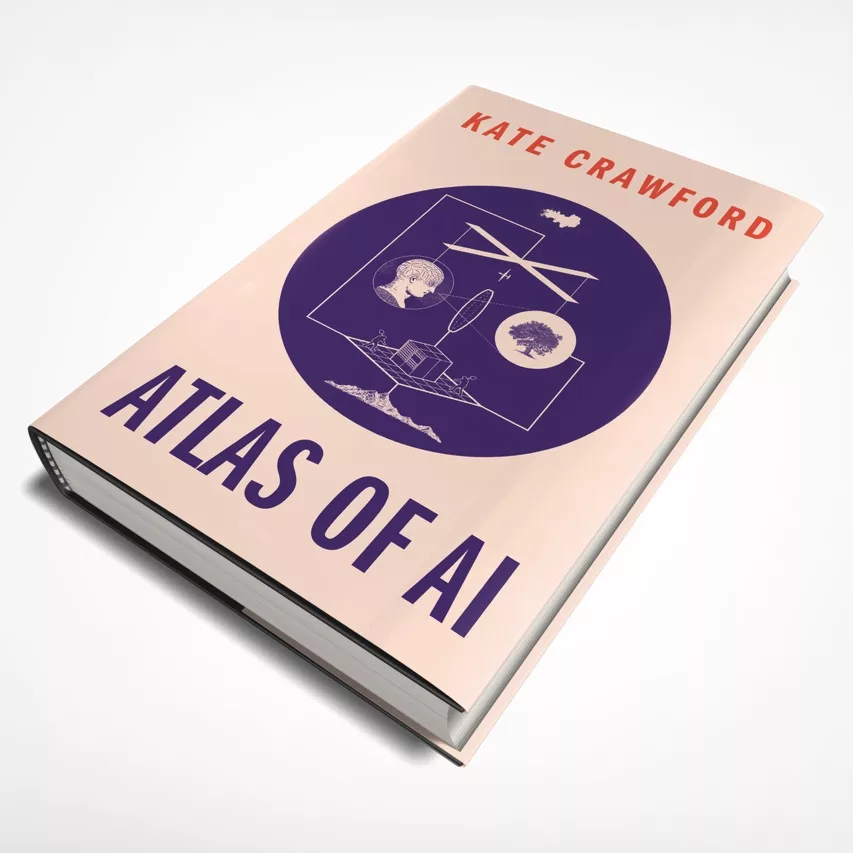AI is much more than a tool. Kate Crawford’s brilliant analysis in ‘Atlas of AI: Power, Politics, and the Planetary Costs of Artificial Intelligence’ challenges the hype surrounding artificial intelligence.
by Thomas Wagner

Whether in marketing, as a translation tool, as a source of design inspiration or as a vision of the future, whether utopian or dystopian, artificial intelligence (AI) is a hot and controversial topic. Kate Crawford is one of the world’s most renowned AI researchers. As she impressively demonstrated at the German Design Council’s Third German Design Debate in Frankfurt’s Paulskirche last year, she is less interested in the technology itself than in its social implications. According to Crawford, far from being a neutral tool, AI is driven by powerful interests that are often overlooked or even deliberately concealed. Reading Crawford’s ‘Atlas of AI: Power, Politics, and the Planetary Costs of Artificial Intelligence’, it quickly becomes clear that AI has many dark sides. It is by no means the magic solution it is often touted to be.
One of the central questions of the book is: How is intelligence ‘made’, what is required to create it, and what are the pitfalls? To thoroughly demystify the AI complex, Crawford engages in a practical critique of myths and ideologies. The first myth suggests that non-human systems are “somehow analogous to the human mind”. Given enough training or resources, ‘a human-like intelligence can be created from scratch’. This perspective overlooks the fact that ‘humans are physical and social beings embedded in broader ecological contexts’. The second myth claims that intelligence is something that ‘exists independently, as if it were a natural entity divorced from social, cultural, historical and political power dynamics’.
Crawford takes a critical look at the whole AI landscape and asks the following key questions:
- What is being ignored when it is claimed that machines can think?
- What political models does AI promote?
- Whose interests does it serve?
- Who is most at risk of being harmed by it?
- What are the social and material consequences of incorporating AI into decision-making processes in education, health care, finance, government, recruitment, communication and the justice system?
- Where should limits be placed on the use of AI?
Crawford argues convincingly that AI is neither artificial nor intelligent, but rather embodied and material. Specifically, it is created using natural resources, fuels, human labour, infrastructure, logistics, historiography and classifications. It also ‘relies on numerous overarching political and social structures’. The author concludes that because of the considerable capital invested in its development and the preconceived notions for which it is optimised, ‘AI systems are ultimately designed to serve existing dominant interests. In this sense, artificial intelligence is a register of power.
Crawford maps this complex terrain in six chapters. ‘Earth’ examines the politics of AI extraction, looking at the tech sector’s demand for rare earth metals, oil and coal, and AI’s growing carbon footprint. ‘Labour’ illustrates how AI is built on human labour – from digital day labourers performing micro-tasks for low wages to make data systems appear smarter than they actually are, to AI-driven time tracking in the workplace. Other chapters explore the role of data in improving algorithms, examine classification practices used to predict human identity, critique the history of automated emotion recognition, and analyse the use of AI systems as instruments of state power. Crawford’s brilliant analysis does more than inform; it raises uncomfortable but essential questions – and awakens us.

‘To understand AI for what it is, we must recognise the power structures it serves.’
– Kate Crawford

Atlas of AI: Power, Politics, and the Planetary Costs of Artificial Intelligence
Kate Crawford
Paperback: 9780300264630
eBook: 9780300252392
Share on Social Media

